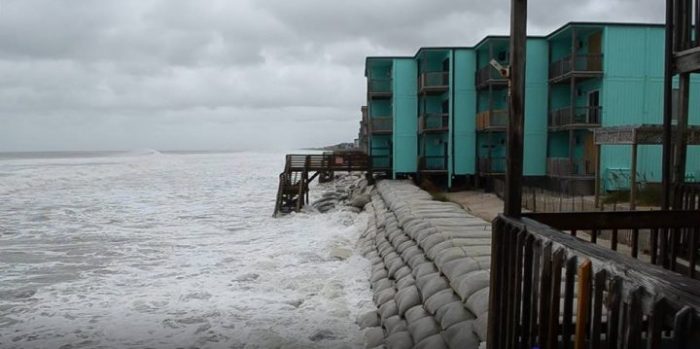NC Ranks 3rd In US In Costs to Protect Coast

North Carolina can expect to have paid a minimum of $34.8 billion for building seawalls to protect coastal communities from rising seas by 2040, according to a recent report from the Institute for Governance and Sustainable Development’s Center For Climate Integrity.
| TOP COUNTIES: | ||
| 1 | Dare: | $5.5 billion |
| 2 | Carteret: | $4.0 billion |
| 3 | Hyde: | $3.3 billion |
| 4 | Beaufort: | $2.8 billion |
| 5 | Brunswick: | $2.7 billion |
| 6 | Onslow: | $2.7 billion |
| 7 | Pamlico: | $2.5 billion |
| 8 | Currituck: | $2.2 billion |
| 9 | Craven: | $1.7 billion |
| 10 | New Hanover: | $1.6 billion |
| TOP CITIES: | ||
| 1 | North Topsail Beach: | $724 million |
| 2 | Ocracoke: | $708 million |
| 3 | Holden Beach: | $432.8 million |
| 4 | Nags Head: | $424.1 million |
| 5 | Jacksonville: | $382.1 million |
| 6 | Oak Island: | $359.6 million |
| 7 | Emerald Isle: | $292.6 million |
| 8 | Surf City: | $283 million |
| 9 | Topsail Beach: | $270.5 million |
| 10 | Duck: | $255.7 million |
North Carolina also ranks third in the number of miles of seawalls, with 5,250 miles required for protection, according to the report, which recommends that polluters be held accountable for the costs.
“As things stand, oil and gas companies and other climate polluters who knew their products caused climate change at least 50 years ago, and then masterminded an exquisitely effective denial campaign for 30 years, are paying none of these costs,” according to the study’s recommendations. “And their position, as expressed in courtrooms across the country, is that they should continue to pay nothing at all.
“Regardless of your political persuasion or your views on energy policy or climate change, there is no avoiding the conclusion that the companies that made and promoted the products that they knew would irrevocably and radically alter the global climate, and then denied it, must pay their fair share to help the world deal with it. Failing to hold polluters to this basic responsibility would be to knowingly bankrupt hundreds of communities, standing idly by as they are slowly and inexorably swallowed up by the sea.”
This study purports to provide the first estimate for the contiguous United States of the costs associated with armoring areas of the coast that contain public infrastructure and that are projected to be flooded by sea level rise. The center partnered with Resilient Analytics, an engineering firm specializing in climate adaptation, to generate the estimated costs of constructing seawalls to protect public infrastructure.
In North Carolina, Dare is the No. 1 county for expense, with an estimated $5.5 billion. Carteret and Hyde counties follow, with $4 billion and $3.3 billion, respectively.
North Topsail Beach is the top coastal community, with $724 million in estimated expense. Ocracoke, Holden Beach and Nags Head follow, with $708 million, $432.8 million and $424.1 million, respectively.
The estimates are only a small portion of a soaring price tag for adaptation and resilience, the center said. Extreme weather, severe heat, heavy rain, drought, flooding and other conditions will also contribute to North Carolina’s costs to prepare for the effects of climate change.
As it stands, taxpayers are on the hook for the entire expense, the report’s authors said.
The center cites a survey that shows that 72% of North Carolina’s registered voters support holding oil and gas companies accountable for a share of the damage.
FacebookTwitterGoogle ClassroomEmailPrintFriendlyShare












